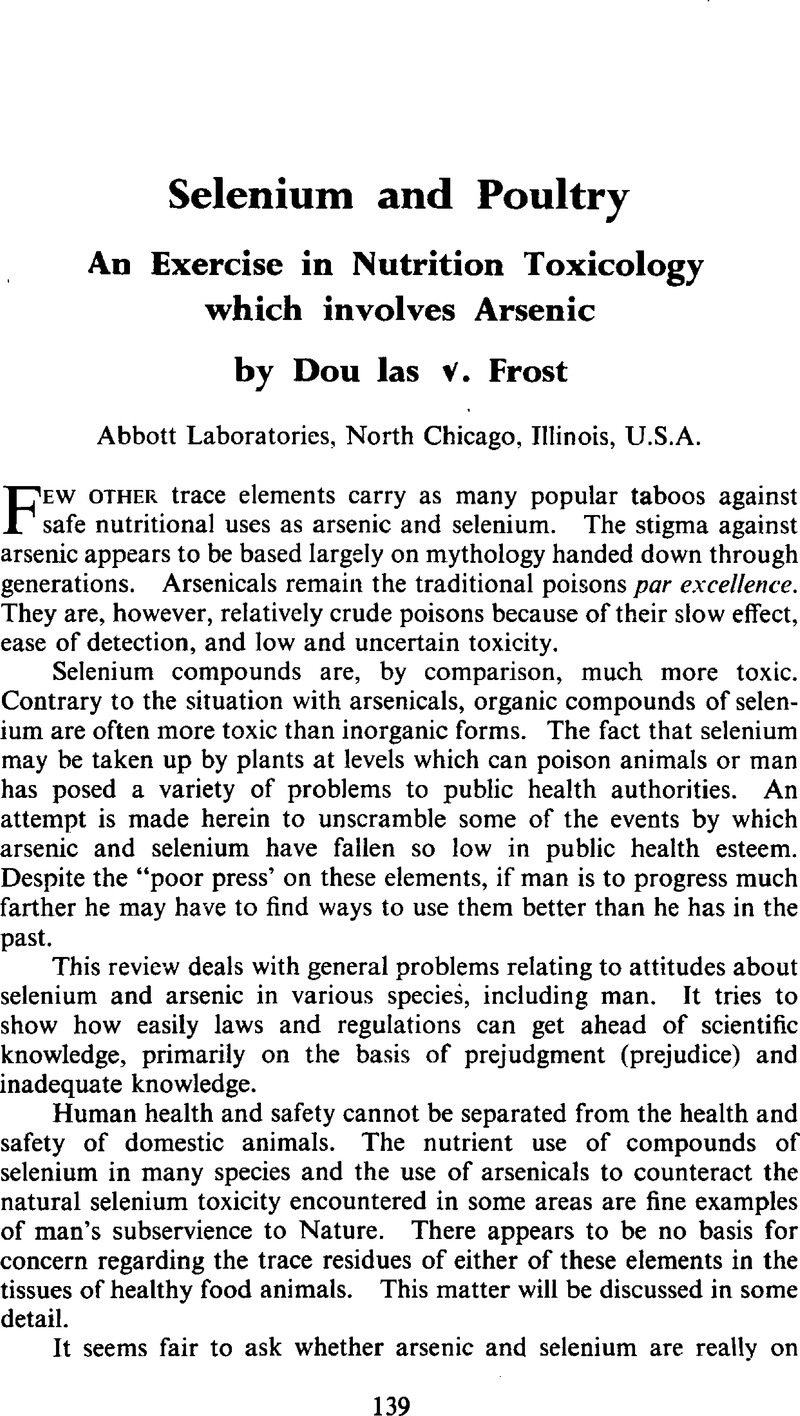Crossref Citations
This article has been cited by the following publications. This list is generated based on data provided by Crossref.
Levander, O.A.
and
Baumann, C.A.
1966.
Selenium metabolism.
Toxicology and Applied Pharmacology,
Vol. 9,
Issue. 1,
p.
106.
Taussky, H.H.
Washington, A.
Zubillaga, E.
and
Milhorat, A.T.
1966.
Determination of trace selenium in biological fluids and tissues.
Microchemical Journal,
Vol. 10,
Issue. 1-4,
p.
470.
Allaway, W.H.
1968.
Vol. 20,
Issue. ,
p.
235.
Frost, Douglas V.
and
Olson, Oscar E.
1972.
The Two Faces of Selenium - Can Selenophobia Be Cured?.
CRC Critical Reviews in Toxicology,
Vol. 1,
Issue. 4,
p.
467.
Bolton, B. A.
and
Hopke, Ph. K.
1975.
The use of instrumental neutron activation analysis for the determination of arsenic concentrations in poultry.
Journal of Radioanalytical Chemistry,
Vol. 25,
Issue. 2,
p.
299.
Frost, Douglas V.
1978.
Inorganic and Nutritional Aspects of Cancer.
Vol. 91,
Issue. ,
p.
259.
Frost, Douglas V.
1984.
What's in a name?.
Science of The Total Environment,
Vol. 38,
Issue. ,
p.
1.
Golden, Michael H.
2009.
Proposed Recommended Nutrient Densities for Moderately Malnourished Children.
Food and Nutrition Bulletin,
Vol. 30,
Issue. 3_suppl3,
p.
S267.
Lenardão, Eder João
Santi, Claudio
and
Sancineto, Luca
2018.
New Frontiers in Organoselenium Compounds.
p.
99.





